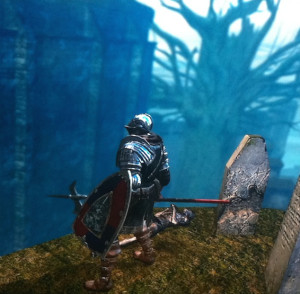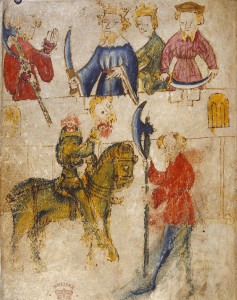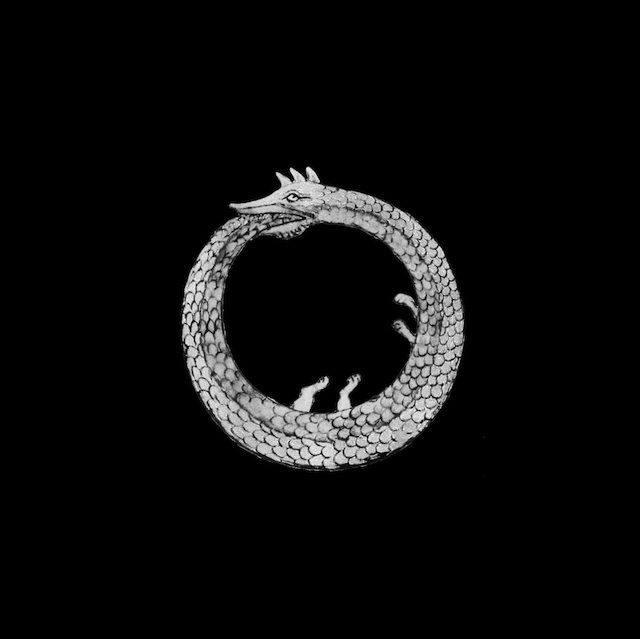These are the current shield rules (approximately the third revision) for The Final Castle. To make sense, I have included preliminarily a few general combat rules as well. Combat Tests are d20, roll high, aiming to meet or exceed an enemy threat level (similar to the probably familiar armor class or difficulty class). Hopefully the fragmentary nature is not too hard to understand.
“Unbalanced” is a state, something like a temporary condition (in 3E terms) that persists until addressed by the combatant. Deflection is a reaction that can be taken in response to an enemy attack.
Overkill
Exceeding the target number of an Ability Test by at least 4 or rolling a 20 prior to any modifiers is an Overkill. For Combat Tests, Overkill adds 1d6 damage and may have additional effects in other contexts.
Unbalanced
Unbalanced combatants may only Melee, Shoot, Flee, or Recover and may not deflect attacks withs Shields. Recover balance with a maneuver.
Deflection
To deflect an attack, deploy a shield. Deflection must be declared before rolling dice to resolve an attack. Deploying a shield Unbalances a combatant but does not require an Action. Shields may not be deployed when Unbalanced. Bypass Maneuvers cannot be deflected with a shield. Different kinds of shields offer other benefits. See the Shields entry in the Weapons section for details.
Maneuvers
Resolve Maneuvers with Melee, Shoot, or Throw Actions depending on the character of the desired effect, substituting Maneuver effects for damage. Overkill applies to Maneuvers also. Thus, Maneuver Overkills cause the Maneuver effect and also 1d6 damage.
Recover (Maneuver)
Recover from being Unbalanced, stand up from prone, or escape a Grapple.
Shields
To deflect an attack, deploy a shield. Deflection must be declared before rolling dice to resolve an attack. Deploying a shield Unbalances a combatant but does not require an Action. Shields may not be deployed when Unbalanced. Bypass Maneuvers cannot be deflected with a shield. Shields come in three varieties:
- Bucklers grant +4 to parry maneuvers, but are useless against ranged attacks and great weapons.
- Medium shields grant +2 defense against small missiles.
- Tower shields deflect all small missiles but are useless against standard or smaller weapons.
Putting this all together, it means that PCs with a shield can deflect (that is, totally nullify) one melee attack per combat (not per round) essentially for free, though the deflection must be “used” before rolling Defense (the equivalent in the system of an enemy attack roll). After a shield has been used for deflection, combat options narrow generally due to becoming Unbalanced, and specifically the shield may not be used again until balance is recovered.
Since maneuvers work like attack rolls, but substituting effects for standard damage and only inflicting any damage upon Overkill results (exceeding target numbers by 4 or rolling a natural 20), the effect is that a skilled fighter attempting a Recovery Maneuver is still fighting (not potentially “wasting” a turn), just at a disadvantage (approximately -4) if they wish to earn another use of their shield during the current combat.
(Don’t worry about Parry Maneuvers; they are beyond the scope of this post.)



